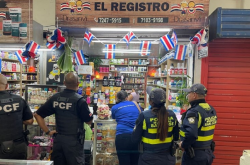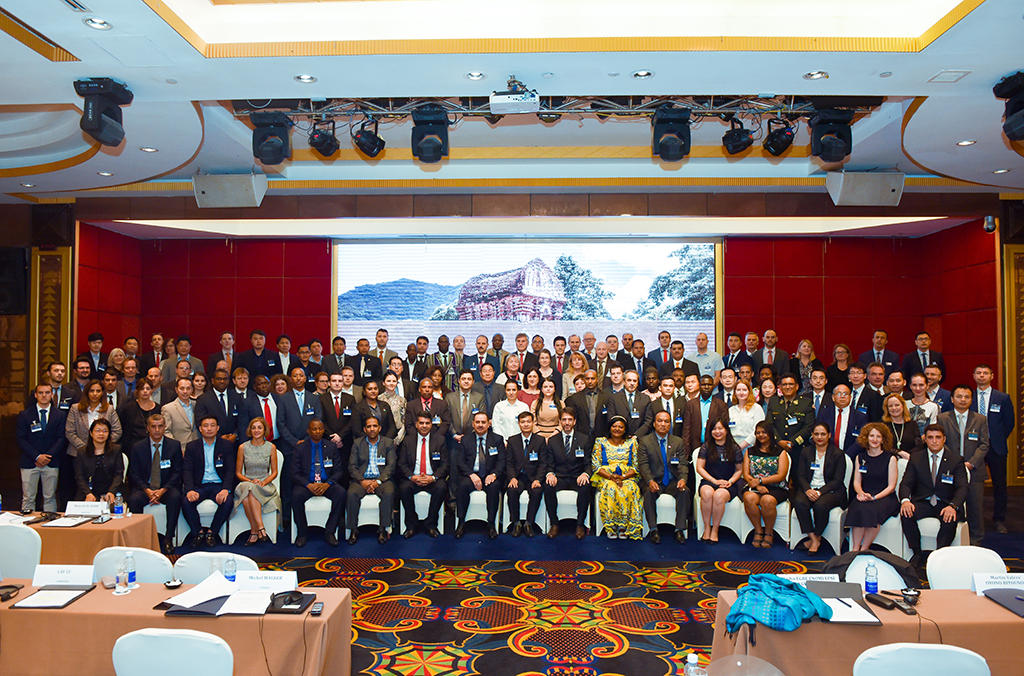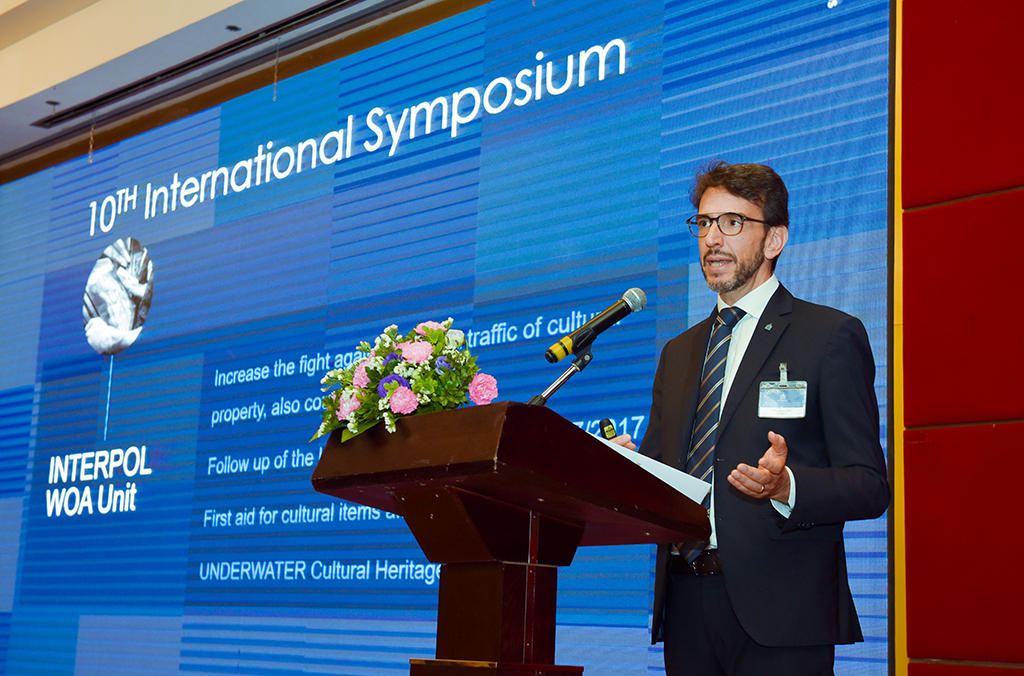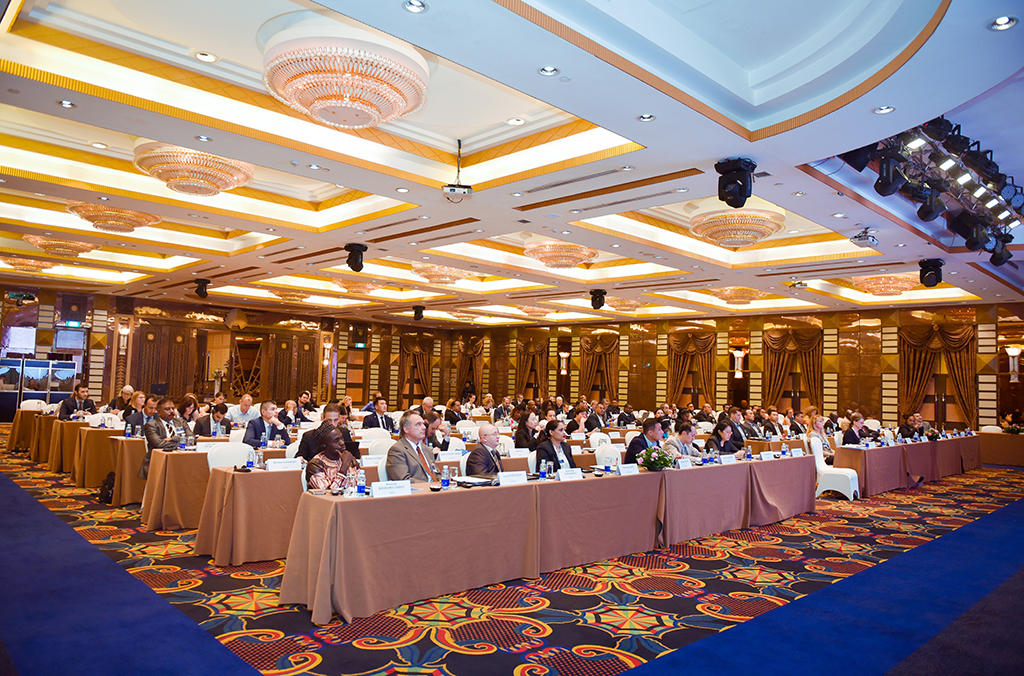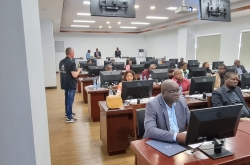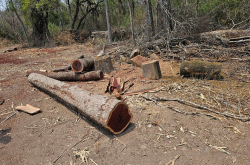HANOI, Vietnam – An INTERPOL symposium has closed with a call to boost global cooperation into tackling the theft, forgery and illicit trafficking of cultural property and antiquities.
Co-hosted by Vietnam’s Ministry of Public Security, INTERPOL’s 10th International Symposium on the Theft of and Illicit Traffic in Works of Art, Cultural Property and Antiquities gathered 130 experts from 80 member countries, as well as participants from the private sector, academia, museums, and more than 20 non-governmental and international organizations.
One of the main topics under discussion during the three-day (17-19 October) event was the protection of cultural property in conflict zones, and the possible link between art theft and the financing of terrorism.
Particular focus was given to follow-up actions relating to two UN resolutions calling for countries to take steps to prevent the trade in stolen cultural property using INTERPOL’s policing capabilities. Countries saw how INTERPOL’s stolen works of art database and training facilities help identify, investigate and prevent the wide range of crime areas frequently associated with art theft.
With an increasing number of forgeries circulating in the art world, delegates shared best practices and experiences on detecting and identifying counterfeit artwork, with an emphasis on sharing information between police, the art sector and academia.
National specialized units
Underlining how the low-risk, high-profit aspect of art theft makes it increasingly attractive to transnational organized crime groups, the symposium addressed the urgent need for countries to establish specialized national art crime units. These would link national databases with INTERPOL’s stolen works of art database and permit the global identification of risk indicators and emerging trends.
A global threat
“Vietnam is not outside the trend: we are faced every day with the challenges posed by theft, illegal excavations, and traffic of cultural heritage,” said Colonel Tuyen Le Duc, Deputy Director General of Vietnam’s Investigations Police Agency.
“We believe that with INTERPOL, the international community will accomplish considerable achievements in the preservation of cultural heritage, works of art and antiques around the world,’’ added Colonel Tuyen Le Duc.
During the event, some 30 officers were trained on using INTERPOL’s newly upgraded and modernized specialized database for more effective art theft investigations. The database contains more than 51,000 stolen objects from 134 countries, and is available to auction houses, art dealers, the general public, museums, journalists and academia.
“With stolen works of art fast becoming as lucrative as drugs, weapons and counterfeit goods trafficking, the crime area is increasingly attractive for organized crime groups,” said Corrado Catesi, INTERPOL Works of Art Unit coordinator.
“The illicit traffic of cultural property is a transnational crime that affects every single country on the planet – either as a source, transit or destination,” added Mr Catesi.
International awareness
The Symposium also viewed the latest “UNESCO Story”, an awareness-raising video developed in collaboration with INTERPOL’s Works of Art unit, featuring an investigation led by the Argentine Federal Police. The story highlights how police discovered a cache of illicit cultural objects – some of which were nearly 3,000 years old - as well as the global scope of illicit trafficking. It will be launched on both INTERPOL and UNESCO social media channels in the coming days.
The global nature of cultural heritage theft, and its growing connection with transnational organized crime groups, requires a multi-sector multi-region approach. With this in mind, INTERPOL will continue to work with its multiple partners worldwide, including UNESCO, WCO, UNODC, ICOM, OSCE, EU Council, UNSC Monitoring Team, British Museum and Durham University.
الأخبار ذات الصلة بالموضوع
